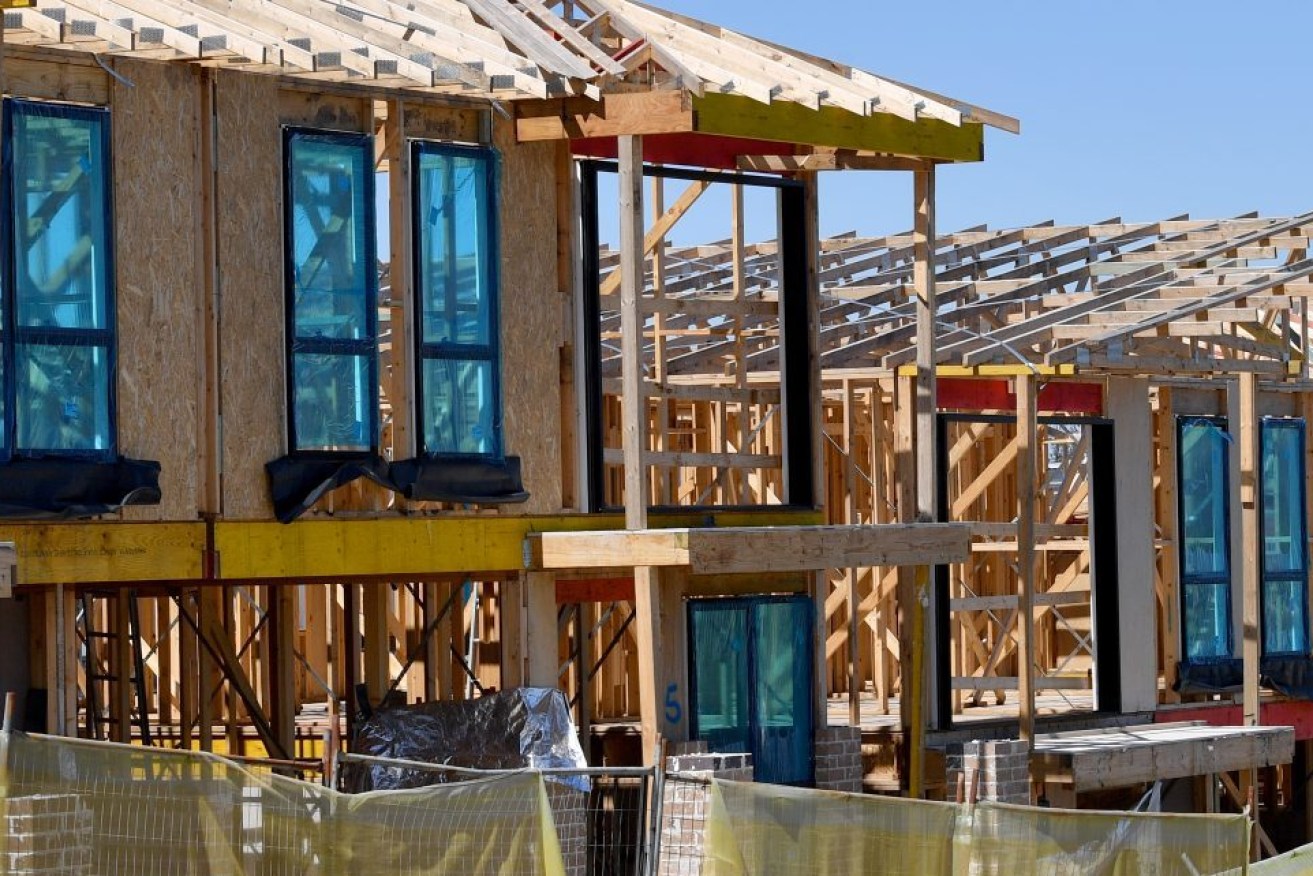New homes taking a year to deliver as industry calls for huge number of workers
House construction times have blown out to almost a year as the industry warns it would need almost half a million workers over the next two years to meet housing growth projections and replace workers that leave the industry.


New housing construction has collapsed (AAP Image/Bianca De Marchi) NO ARCHIVING
The Master Builders Association about half of the that number would need to be in technician and trade roles.
Adding to the woes of the sector, construction times for homes and units has slowed significantly and prices for some materials continue to escalate.
Data from the Australian Bureau of Statistics was unlikely to provide anything to cheer about from the building sector.
The ABS found that the total number of dwellings approved fell 4.6 per cent in September, in seasonally adjusted terms, following an 8.1 per cent rise in August.
ABS head of construction statistics Daniel Rossi said approvals for private sector dwellings excluding houses fell by 5.1 per cent, following a 10.1 per cent rise in August.
Total dwelling approvals were driven down by falls in Western Australia (-11.0 per cent), New South Wales (-10.5 per cent), and Victoria (-8.9 per cent). Rises were recorded in Queensland (+34.6 per cent), Tasmania (+18.3 per cent), and South Australia (+5.1 per cent).
MBA chief executive Denita Wawn said in 2022-23, the average build time for detached houses increased from 10.3 months to 11.7 months.
For new townhouses, it now takes a total of 14.9 months from approval to completion compared with 13.5 months in 2021-22.
“However, apartment building times are still far slower than was normal before the pandemic,’’ Wawn said.
“When our output of new apartments was at record levels back in 2015-16, it took just 21 months to complete a build.
“These unnecessary delays to construction ultimately drive up the cost of building which has already faced inflationary challenges with building product prices and a tight labour market.
“Since the pandemic, building product prices have increased 33 per cent and 4.4 per cent in the last 12 months.
“While we are seeing a stabilisation of some building product prices primarily around steel, some products such as cement continue to escalate.’’
Master Builders’ forecasts 2023-24 will see home starts decline by 2.1 per cent to around 170,100, well below the 200,000 needed per year to meet population growth.
“With a housing target of 1.2 million homes in five years, to realistically achieve this goal, we need to reduce the time it takes to build,” Wawn said.












